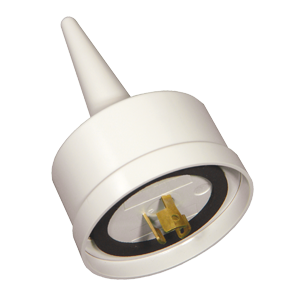Experimental Radio Applications at the FCC
This summarizes a selection of applications for the Experimental Radio Service received by the FCC during October 2010. These are related to ultra-wideband, machine-to-machine, satellite, GSM, white space, and radar.
What do I mean by “selection?” I look at all applications for new experimental license or special temporary authority (ignoring renewals, modifications of existing licenses, and transfers of control). From those, I pick the ones I find most interesting, which is most except for the following:
- GPS repeaters, such as those put in a factory to replicate a GPS environment for testing. (Note, however, that companies regularly get tripped up by not demonstrating compliance with separate NTIA requirements.)
- Short-term authority for video program production. Someone needs a video link to cover a golf tournament or football game, perhaps by using flight-test telemetry bands (with that coordinator’s permission) for a day.
- Demonstrations for customers. Demonstrations at trade shows.
- An application very similar to one covered recently.
- Applications too vague or lacking enough detail to write much about. If applications are very lacking, FCC staff will sometimes ask for more information.
- Electromagnetic compatibility (EMC) compliance testing including RF immunity testing for compliance with European regulations.
- RF integration testing. (A radar from company A is paired with telemetry from company B and installed on a ship from company C.)
- Applications for general-purpose antenna test ranges.
- Applications for which confidentiality treatment has been sought. Companies can do this under the FCC’s rules, but I suspect it’s overdone at times. The request for confidentiality is made public, and may have some details. (A couple of times I have seen companies put what I think is the confidential information in the confidentiality request.) That, and a bit of independent research, can give me an idea what they’re up to. If I can make an educated guess, I will, saying so.
On to October’s applications:
- Zimmerman Associates filed an application (with supporting exhibits) for special temporary authority to test the capability of using a full polarimetric UWB radar system for identifying roadside bombs and improvised explosive devices (IEDs). Testing is to be on 3100-5600 MHz at Fort A.P. Hill, Virginia. The prototype equipment uses time-modulated ultra-wideband (UWB) technology developed by Time Domain Corporation. It generates a signal that is position modulated; the position of the modulated pulse varies randomly in time so as to produce a spectrum that approximates Gaussian noise.
- David Miller, an MIT professor, filed an application (with associated exhibits) for experimental license to operate a CASTOR (Cathode/Anode Satellite Thruster for Orbital Repositioning) series satellite to validate the performance and application of Diverging Cusped Field Thruster (DCFT) technology. This will be achieved by taking on-orbit state data to compare the degradation experienced by the DCFT to that of similar technologies such as Hall thrusters. Operation is to be on 2.4000-2.4835 GHz, which will be used to download telemetry and uplink commands. The ground station will be on Kwajalein Atoll in the Marshall Islands.
- SouthConn filed an application for special temporary authority to demonstrate a streetlight control and monitoring system on 910.500-919.625 MHz. Under the system, each light is fitted with a radio device that communicates with a central site, so lights can be managed down to an individual level. The technology is similar to that used for Automatic Meter Reading (AMR).

- The University of California Berkley filed an application (with supporting exhibit) for special temporary authority to conduct testing related to the OpenBTS project, which aims to provide open-source, lightweight, low-cost GSM base stations for underserved areas. The Computer Science department hopes to create a GSM base station optimized for low-density rural areas in Sub-Saharan Africa. Testing will be in the 890-960 MHz range.
- The Virginia Tech Mobile Portable Research Group (MPRG) filed an application (with supporting exhibits) for experimental license to test white-space devices on the TV broadcast bands — 174-216, 512-608, and 614-698 MHz. In particular, the MPRG is interested in determining what modulation schemes prove to be most effective in rejecting narrowband interference from devices such as wireless microphones. In addition, it is interested in determining what kinds of adverse effects white-space devices will have on devices such as wireless microphones, and what steps can be taken to mitigate such interference.
- 4-D Security Solutions filed an application (with supporting exhibit) for experimental license to test a Telephonics model MR2020 radar at Stevens Institute of Technology in Hoboken, New Jersey. The applicant has a research contract with the school to develop a system using the radar to detect small watercraft on inland waterways such as the Hudson River. The application is homeland security. Operation is to be on 8750-8950 MHz.
- Metric System Corporation filed an application for special temporary authority to operate a 40-node wireless network on white-spaces frequencies in the 512-698 MHz TV band. This is in support of a Rice University project.
[cross-posted from Steven Crowley’s blog.]
Previous Post



